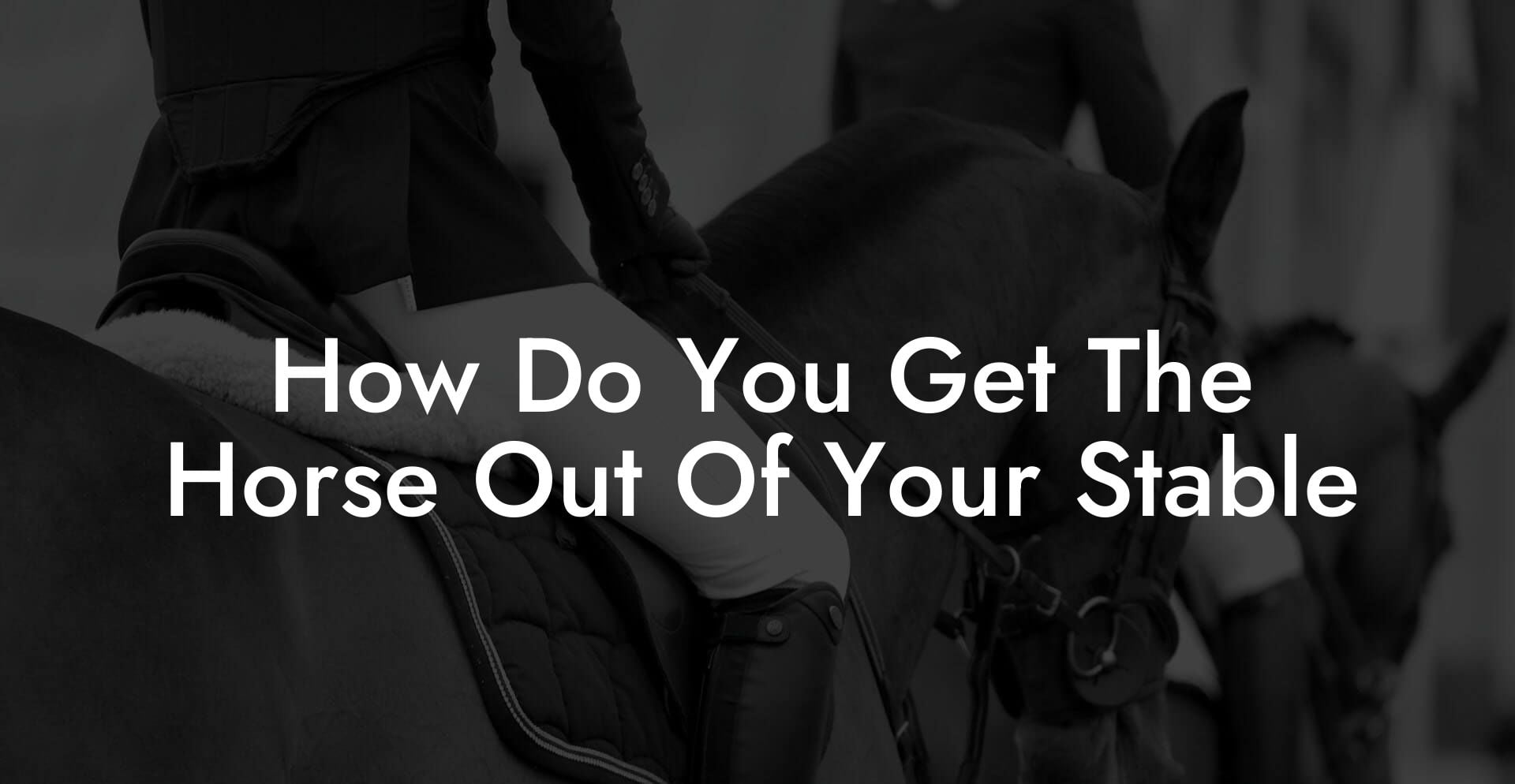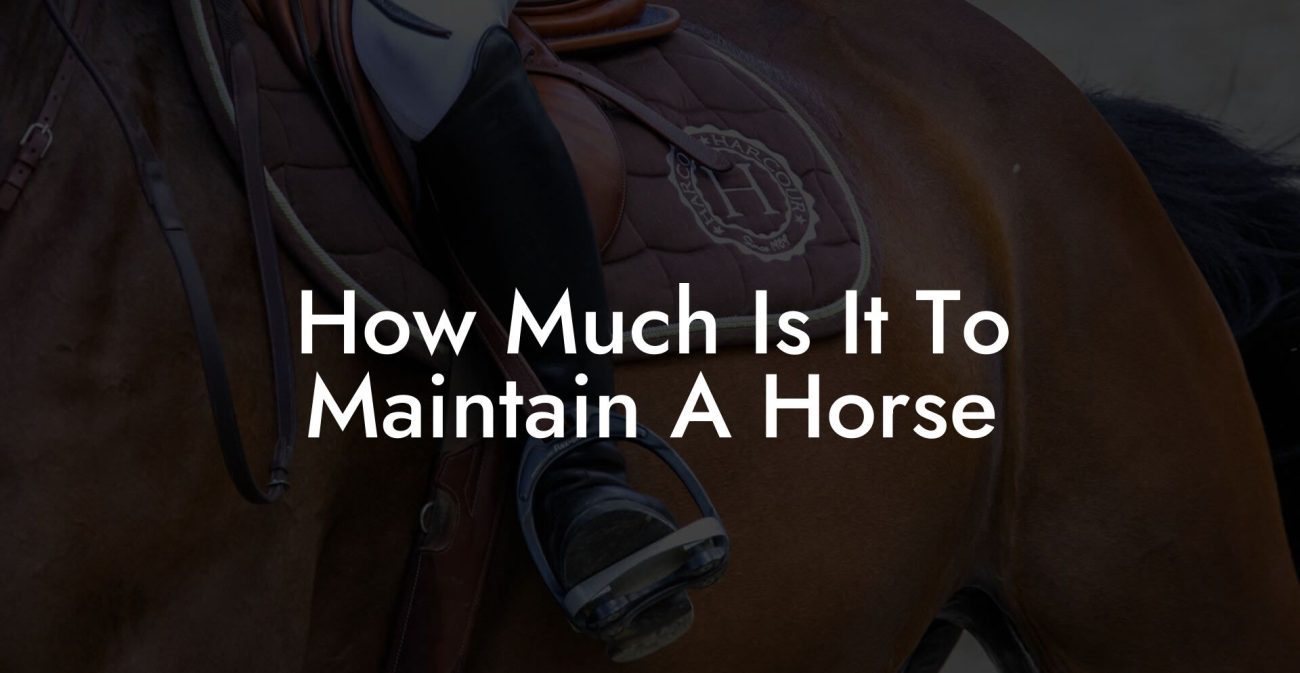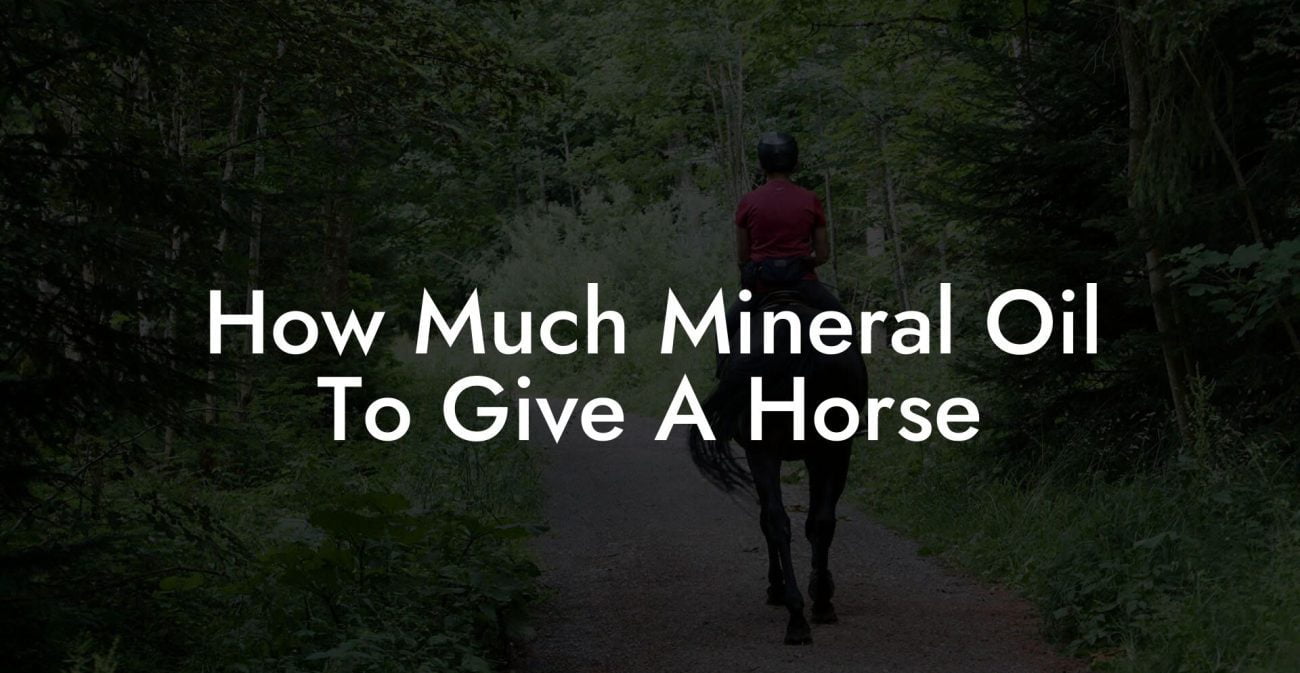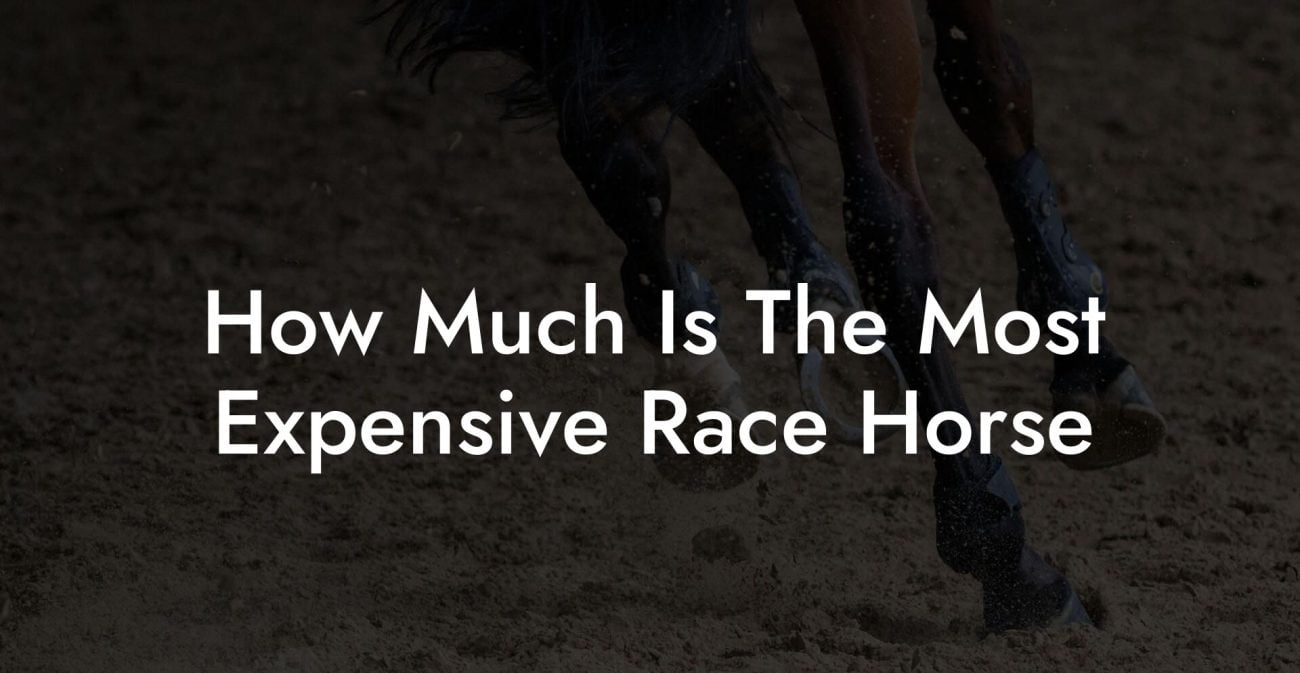Ever found yourself staring at your stable wondering, “How do I even get the horse out of here without starting a rodeo?” Whether you’re a first-time caretaker or a seasoned equine enthusiast with a social media presence that screams #StableLife, this guide is your humorous, in-depth roadmap to safely and effectively getting your horse out of its cozy quarters while also mastering the art of modern horse care.
Quick Links to Useful Sections
- Understanding Your Equine Roommate: Horse Behavior 101
- How Horses Perceive Their Environment
- The psychology Behind That Stubborn Stare
- The Art and Science of Stable Navigation: A Step-by-Step Guide
- Step 1: Setting the Scene – Preparation is Key
- Step 2: The Approach – Gentle and Confident
- Step 3: Cueing Up for Movement
- Step 4: Navigating Obstacles and Handling Resistance
- Step 5: The Grand Exit – Making It a Positive Experience
- Modern Technology Meets Old-School Horse Whispering
- Smart Stables: The Future of Equine Management
- Wearable Tech for Horses
- Overcoming Stubbornness: When Your Horse Just Doesn’t “Feel It”
- Identifying the Root Cause of Resistance
- Tactics to Break Through the Wall of “Nope”
- Safety First: Essential Gear and Protocols for a Smooth Exit
- Must-Have Equipment for Horse Handling
- Establishing a Safety Protocol
- Case Studies: Real-Life Tales of Stable Escapes
- The Great Escape of “Lightning”
- When “Rocky” Met Routine
- A Team Effort: The Collaborative Stable Exit
- Integrating Horse Care Into Your Modern Lifestyle
- Stable Design and Modern Aesthetics
- Community and Digital Resources: Because You’re Never Alone in This Journey
- Resources and Community Support: Your Next Steps
- FAQs: Your Burning Questions on Getting the Horse Out of the Stable Answered
- Embracing the Journey: Making Horse Care a Lifestyle
Understanding Your Equine Roommate: Horse Behavior 101
Before we even think about pushing that door open, it’s essential to understand the mindset of your majestic, four-legged friend. Horses are social, intelligent, and can be as stubborn as your favorite Gen-Z meme. Their behavior is influenced by instinct, environmental factors, and a not-so-secret love for routine. So, how do you coax a creature used to lounging in hay and enjoying endless kibble breaks? Let’s break down the basics.
How Horses Perceive Their Environment
Horses thrive in environments that offer safety, routine, and gentle communication. For them, the stable is not just a structure, it’s a sanctuary that provides shelter, familiarity, and sometimes even friendship with fellow equines. Removing them from this comfort zone can trigger anxiety or resistance. Understanding these heartwarming yet stubborn creatures means acknowledging that they have moods, preferences, and sometimes, a flair for the dramatic.
The psychology Behind That Stubborn Stare
Ever caught your horse giving you “the look” when it’s time for a ride? That stare isn’t mere defiance, it’s a complex mix of curiosity, caution, and the instinct to protect their personal space. Much like us on a Monday morning, horses need a bit of a nudge, some positive reinforcement, and perhaps a tasty treat to get them rolling outside the stable.
When these gentle giants resist relocation, it's not defiance in the human sense, it's an intricate dance of trust and communication. Building that trust requires patience, empathy, and a willingness to adapt your approach until you find the key to unlocking your horse’s cooperative spirit.
The Art and Science of Stable Navigation: A Step-by-Step Guide
Now that we’ve set the stage by understanding our equine companions, let’s dive into a step-by-step guide that blends practical horse care with the art of a gentle prod. Whether you’re leading a spirited bay or a calm chestnut, this guide will have you mastering the exit strategy like a pro.
Step 1: Setting the Scene – Preparation is Key
Just as you wouldn’t face a group project without a plan, you shouldn’t try to get a horse out of its stable without setting the stage first. Here are some tips to prepare:
- Create a Calm Environment: Turn off any loud music, unnecessary distractions, and ensure the stable area is free from hazards.
- Check Your equipment: Ensure the lead rope, halter, and any other gear are in perfect condition. A frayed rope or a loose leash can turn a routine trip into a wild ride.
- Plan Your Route: Know exactly where you’re headed. A clear path means fewer distractions for both you and the horse.
- Establish Trust: Spend some quality time with your horse. A few minutes of grooming or a gentle pat on the neck can work wonders!
Think of these steps as setting up the perfect Instagram post, everything needs to be just right for the magic to happen.
Step 2: The Approach – Gentle and Confident
When approaching your horse, keep your body language as chill as your favorite playlist on repeat. Confidence is contagious, and your horse will pick up on your calm vibes. Here’s how to nail the approach:
- Be Visible and Relaxed: Walk slowly, with your shoulders relaxed. Avoid sudden movements that might startle your equine friend.
- Talk Softly: Use a gentle tone, peppering in friendly terms like “buddy” or “pal.” Horses may not understand every word, but they definitely pick up on the vibes.
- Use Positive Reinforcement: Whether it’s a carrot, a sugar cube, or their favorite treat, let your horse know that stepping out is a win-win scenario.
Remember, the objective is to engage your horse in a calm, stress-free manner, turning a potentially chaotic situation into a mutual adventure.
Step 3: Cueing Up for Movement
Once you’ve gained your horse’s attention, it’s time for the actual move-out. This isn’t about physically dragging a reluctant roommate out, it's more like inviting them on an exciting journey. Here’s what to do:
- Use Clear Commands: Whether you use traditional cues or create your own, consistency is key. Commands like “walk” or “let’s go” work well when paired with gentle tugs on the lead rope.
- Body Language Matters: Sometimes, a subtle shift in your stance or a small step forward can nudge your horse in the right direction.
- Patience is Everything: If your horse hesitates, don’t rush. Allow them to adjust at their own pace, reinforcing positive behavior with every small victory.
Think of it as a slow dance, syncing your steps with your horse’s instincts until you create a rhythm that both of you can groove to.
Step 4: Navigating Obstacles and Handling Resistance
Even with the best-laid plans, there will be moments when your horse decides to channel its inner diva by resisting the move. Here’s how to troubleshoot common issues:
- Address Distractions: Sometimes, a gust of wind or a curious critter might steal your horse’s attention. Redirect their focus with a word or a treat.
- Reassess Your Approach: If resistance persists, take a step back and evaluate whether your approach might have been too forceful or too rushed.
- Be Ready to Adapt: Every horse is unique. What works for one may not work for another. Flexibility in your method is key.
Occasionally, you might have to hit the “pause” button, regroup, and then try again with a refreshed strategy, and maybe an extra treat in your pocket.
Step 5: The Grand Exit – Making It a Positive Experience
Finally, as you lead your horse out of the stable, maintain enthusiasm and positivity. This journey isn’t just about leaving a building; it’s about opening up a world of adventure!
- Celebrate Small Wins: When your horse takes the step outside, offer plenty of praise and rewards. This reinforces the behavior and makes future outings even smoother.
- Smooth Transitions: Once outside, transition to a calm activity like a gentle trot, a cool-down walk, or a play session in the pasture.
- Reflect: After the exit, take a moment to appreciate the journey. This helps you identify what worked well and what could be improved for next time.
With these steps, you’re not just opening a door, you’re creating a memorable, positive experience that fosters trust and makes every outing something to look forward to.
Modern Technology Meets Old-School Horse Whispering
In today’s age, even horse stables are getting a tech upgrade. From smart stable doors to wearable trackers that monitor your horse’s vitals, technology is transforming how we manage and care for our equine companions.
Smart Stables: The Future of Equine Management
Imagine a stable that can automatically open its doors at sunrise or close them when the weather changes unexpectedly. Smart stable systems integrate sensors, automation, and even smartphone controls to create an environment that adapts to your horse’s needs. These systems can help you:
- Control Access: Automated stable doors ensure that your horse is only let out when it’s safe and optimal to do so.
- Monitor Environment: Temperature, humidity, and ventilation are all under constant surveillance, ensuring your horse’s comfort.
- Ensure Security: With smart locks and real-time notifications, you’re always aware of what’s happening in and around your stable.
Whether you’re a tech enthusiast or just looking for an edge in providing top-notch care, integrating smart technology can simplify the process and add a dash of modern flair to your equine management routine.
Wearable Tech for Horses
Beyond stable automation, wearable technology is gaining popularity among horse enthusiasts. GPS trackers, heart rate monitors, and even devices that alert you to changes in your horse’s activity levels can provide invaluable insights into their health and behavior. These gadgets allow you to:
- Track Exercise Levels: Monitor how active your horse is throughout the day and ensure they’re getting the right amount of movement.
- Detect Health Issues Early: Changes in vital signs or activity can be early indicators of illness or discomfort.
- Data-Driven Decisions: Use the collected data to fine-tune training regimens, dietary needs, and overall management strategies.
Embracing technology doesn’t mean losing the personal touch, it means enhancing your ability to understand and care for your horse in ways that were unimaginable just a few years ago.
Overcoming Stubbornness: When Your Horse Just Doesn’t “Feel It”
There are days when your horse might decide that staying in the stable is a form of silent protest. Maybe it’s been a long day, or perhaps the stable is just too darn comfortable. Whatever the reason, overcoming a moment of stubbornness is part of the journey.
Identifying the Root Cause of Resistance
Before labeling your horse as “stubborn,” take a closer look at the situation. Is there a sudden noise outside? Has something changed in the routine? Understanding the underlying cause can help you address the behavior more effectively:
- Environmental Changes: Check if recent weather shifts, loud noises, or even new animals in the vicinity are affecting your horse’s mood.
- Health Concerns: Sometimes a horse’s reluctance to move could be linked to discomfort or a physical issue. When in doubt, consult your veterinarian.
- Past Experiences: Negative experiences in the past (like an unexpected scare) can imprint on a horse’s memory, making it reluctant to repeat the experience.
Identifying the source of the resistance allows you to tailor your approach, whether it means making the environment more inviting or addressing a specific health concern.
Tactics to Break Through the Wall of “Nope”
Once you understand what’s holding your horse back, here are some tried-and-true tactics to get it moving:
- Incremental Exposure: Slowly increase the amount of time your horse spends outside. Start by opening the stable door for a few minutes and gradually extend the duration.
- Use the Power of Positive Reinforcement: Reward every brave step your horse takes with its favorite snack or an extra pat on the cheek. Positive feedback can work wonders in changing behavior.
- Stay Consistent: Consistency is key. Repeating the process daily helps establish a routine that your horse will eventually embrace.
In the end, patience paired with attention to your horse’s unique quirks not only resolves the immediate challenge but also strengthens your bond over time.
Safety First: Essential Gear and Protocols for a Smooth Exit
While mastering the art of getting your horse out of the stable, safety should always be at the forefront. After all, we’re dealing with a powerful animal that deserves as much respect as a vintage sports car.
Must-Have Equipment for Horse Handling
A well-equipped caretaker is a safe caretaker. Equip yourself with the following essentials:
- Quality Halter and Lead Rope: Invest in durable, well-fitting gear. Check for wear and tear regularly to avoid unexpected mishaps.
- Protective Footwear: Whether you’re wearing riding boots or sturdy sneakers, proper footwear can protect you in case your horse gets overexcited.
- First-Aid Kit: Accidents happen, even for the best of us. Keep a specialized equine first-aid kit on hand for minor injuries or unexpected scrapes.
- Communication Devices: In today’s tech-savvy world, a mobile device for quick calls or alerts can be invaluable, particularly in larger stables or during group outings.
By investing in the right gear, you not only enhance your own safety but also create a more secure environment for your horse.
Establishing a Safety Protocol
A well-thought-out safety protocol ensures that both you and your horse are protected during every move. Consider these steps when devising your protocol:
- Routine Equipment Checks: Establish a checklist for gear maintenance and environmental safety before any movement.
- Clear Communication: If you’re working with a team, ensure everyone knows their role and how to respond in case of an emergency.
- Emergency Plans: Always have a plan for unexpected situations. Whether it’s a sudden storm or a horse that decides to change direction, preparedness is your best friend.
- Training and Refreshers: Regularly review your safety procedures with anyone involved in horse care. A little refresher course can go a long way in times of chaos.
Remember, safety protocols aren’t about stifling spontaneity, they’re about ensuring that every adventure outside the stable remains as fun and secure as it is exciting.
Case Studies: Real-Life Tales of Stable Escapes
Sometimes the best way to learn is by hearing the wild (and sometimes hilarious) tales of others who have navigated the challenge of getting a horse out of their stable. Here are a few real-life examples that prove every horse caretaker has their own epic story.
The Great Escape of “Lightning”
Meet Lightning, a feisty, quick-witted mare known for her love of adventure and a knack for making even the calmest days feel like a scene from a comedy. One crisp morning, her caretaker tried a new approach by leaving the stable door open with a tempting apple displayed just outside. At first, Lightning hesitated, eying the apple like someone scrutinizing an online sale. But as the day warmed up and the gentle breeze set the scene, she slowly sauntered out, only to pivot and circle back for another sniff. Eventually, after a few rounds of playful teasing and positive reinforcement, Lightning confidently trotted out, leaving her caretaker laughing at the sheer absurdity of the situation.
When “Rocky” Met Routine
Rocky, a classic thoroughbred with a stubborn streak as legendary as his sire, had grown accustomed to his stable life. His caretaker decided it was time for a change by turning the daily exit into an event. With a tailored routine that included a familiar playlist, calming aromatherapy (yes, horses can have a spa day, too!), and consistent commands, Rocky eventually relented. What began as a slow, questionable shuffle turned into a confident, routine walk outside the stable, a transformation that underscored the power of persistence, preparation, and a bit of creative flair.
A Team Effort: The Collaborative Stable Exit
Not every story is a solo adventure. In one instance, a group of friends managing a community stable pooled together their ideas and techniques. Combining gentle cues, synchronized routines, and some innovative use of handheld technology to monitor progress, they managed to get a notoriously lazy horse, affectionately known as “Shadow,” to leave the stable. The process, filled with laughter and humorous mishaps along the way, reinforced the notion that sometimes two (or more) heads are better than one when it comes to equine care.
These stories illustrate that while each horse and situation is unique, the blend of humor, care, and creative problem-solving is universal. Every challenge encountered is just another chance to grow, learn, and perhaps share a viral TikTok moment.
Integrating Horse Care Into Your Modern Lifestyle
In a world of fast-paced living and digital distractions, caring for a horse might seem like a throwback to simpler times, but far from it! Modern equine care integrates tradition with technology, fun with function, and mindfulness with the occasional meme-worthy moment.
Stable Design and Modern Aesthetics
Today’s stables aren’t just practical, they’re designed with style in mind. Think eco-friendly materials, modular layouts, and plenty of natural light. A well-designed stable not only improves your horse’s quality of life but can also become a backdrop for your next social media post. Modern stable designs often feature:
- Smart Lighting and Ventilation: Automated systems that adjust based on time of day and weather conditions, ensuring your horse stays comfortable.
- Sustainable Materials: Eco-conscious designs that use recycled or locally sourced materials, reducing your carbon hoofprint.
- Multipurpose Spaces: Areas that double as training grounds, relaxation zones, or even impromptu event spaces for community gatherings.
Embracing these design elements not only contributes to your horse’s well-being but also aligns with the modern push towards sustainable, efficient, and visually appealing spaces.
Community and Digital Resources: Because You’re Never Alone in This Journey
One of the most exciting aspects of modern horse care is the thriving community of enthusiasts online and offline. Whether you’re looking for advice on subtle cues, the best gear reviews, or just a good laugh about a stable mishap, there’s a wealth of resources available.
- Online Forums and Social Media Groups: Join communities on platforms like Facebook, Reddit, or Instagram to share stories, ask questions, and celebrate every small victory in your horse care journey.
- YouTube Tutorials: With countless tutorials available, you can find video guides that cover everything from proper haltering techniques to advanced stable management strategies.
- Workshops and Local Events: Connect with other horse enthusiasts through local riding clubs, workshops, or community events, these are fantastic opportunities to learn and share experiences face-to-face.
Harnessing these digital and real-life resources not only broadens your knowledge but also places you in a vibrant network of like-minded individuals who understand that every day with your horse is a new adventure, and every stable exit is a story waiting to be told.
Resources and Community Support: Your Next Steps
The journey to mastering how to get the horse out of your stable doesn’t end with this guide, it’s merely the starting gate for ongoing learning and community interaction. Here are some resources and next steps to consider:
- Equine Behavior Books and eBooks: Delve deeper into the psychology behind horse behavior with curated reading lists that blend humor, science, and storytelling.
- Online Courses and Webinars: Platforms such as Udemy and Coursera offer courses on equine care, from basic stable management to advanced behavioral training techniques.
- Local Equine Clubs: Connect with local horse riding clubs or stables that offer meetups, workshops, and training sessions, hands-on experience can be invaluable.
- Veterinary and Equine Experts: Ensure regular consultations with a trusted veterinarian who specializes in equine care. This relationship is key to early detection of health issues and overall well-being.
- Social Media and Blogs: Follow popular equine care bloggers, vloggers, and Instagram influencers for daily doses of inspiration, practical tips, and a few laughs along the way.
Your next steps are simple: engage, share, and keep learning. The digital age has made it easier than ever to access a world of knowledge and support, so take advantage and make your equine journey as dynamic and exciting as you are.
FAQs: Your Burning Questions on Getting the Horse Out of the Stable Answered
Not all questions are created equal, and when it comes to horse care, curiosity often leads to the best learning experiences. Below are some frequently asked questions that get to the heart of the matter:
1. Why is my horse reluctant to leave the stable?
Horses develop strong attachments to their safe spaces. Resistance could stem from a desire for comfort, fear of new environments, or even past negative experiences. A gradual, positive approach often helps ease the transition.
2. What are some effective cues to encourage my horse to move?
Clear, consistent verbal commands combined with gentle physical cues (like a soft tug on the lead rope) are very effective. Many caretakers also find that pairing these cues with treats reinforces positive behavior.
3. How can I integrate technology to improve stable management?
Modern stables can be outfitted with smart door systems, climate control, and wearable trackers for horses. These technologies not only improve safety but can also help tailor your approach based on real-time data.
4. What steps should I take if my horse panics during the exit?
Remain calm, speak soothingly, and give your horse a moment to adjust. Sometimes, stepping back and making a slower approach or offering a treat can alleviate anxiety.
5. Can group outings help if my horse is particularly stubborn?
Yes, some horses find the group dynamic encouraging. Arranging coordinated exits with other horses under careful supervision can make the process more enjoyable and less stressful.
6. How do I safely use a lead rope without causing discomfort?
Ensure the rope is properly fitted and made of quality material. Avoid jerky motions and always pair physical cues with calm verbal communication to maintain comfort and trust.
7. Are there any workshops or courses that can help me improve my horse-handling skills?
Absolutely. Many communities, both online and offline, offer courses and workshops focused on equine behavior and stable management. Check local equestrian centers or online platforms for upcoming dates.
These FAQs serve as a starting point, if you have more specific questions, the equestrian community is as responsive as it is passionate about sharing knowledge.
Embracing the Journey: Making Horse Care a Lifestyle
Getting your horse out of the stable is more than just a daily chore, it’s a dynamic part of a lifestyle that blends passion, creativity, and a deep respect for these magnificent creatures. Every stable exit is a mini-adventure, a moment to celebrate the bond between you and your horse, and a chance to grow as a caretaker in this ever-evolving world of modern equine care.
With every step outside the stable, you’re not merely guiding your horse; you’re building trust, fostering communication, and creating memories that will last a lifetime. Whether it’s a quiet morning walk under a pastel sunrise or a lively trot through the dewy pasture, the journey is filled with moments that remind you why you fell in love with horses in the first place.
As you integrate innovative technologies, share in the wisdom of a supportive community, and embrace each day as a new opportunity to learn, remember that horse care is as much about nurturing your own growth as it is about caring for your equine friend. So take a breath, laugh off the inevitable mishaps, and stride confidently into each new day, because every great ride starts with that first step outside the stable.
Here’s to many more adventures, countless shared smiles, and a life filled with the spirited grace of your equine companion. Your journey to mastering horse care is not just a destination, but a continuous, ever-rewarding experience.













